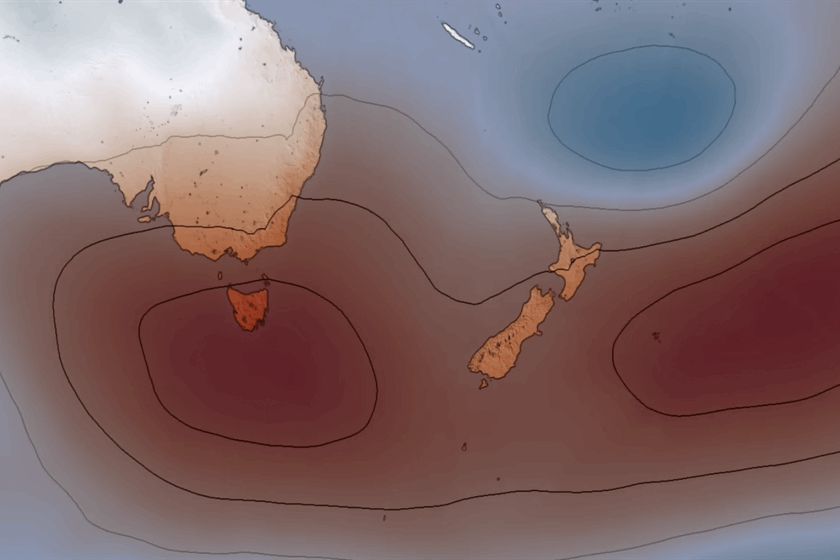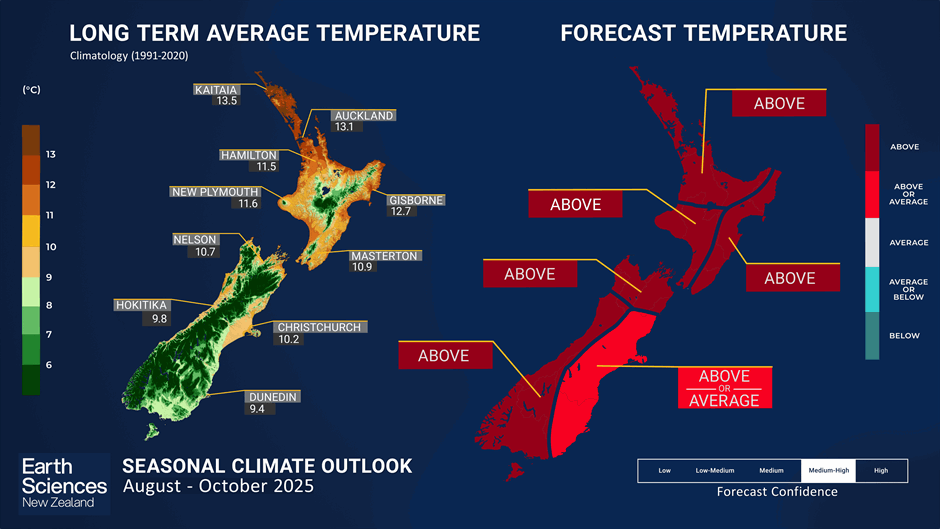Warmer than usual weather ahead, wetter in north and east, as La Niña signals strengthen
1 Aug 2025

Media release – Earth Sciences New Zealand | Seasonal Outlook Climate August to October 2025 suggests warm, damp weather, with La Niña’s possible return.
Earth Sciences New Zealand (formerly NIWA) Seasonal Outlook Climate August to October 2025 suggests warm, damp weather, with La Niña’s possible return.
Parts of New Zealand are likely to experience more wet, warm weather over the next three-month period, with shifting ocean conditions hinting at a possible return to La Niña by the end of the year, according to the latest Earth Sciences New Zealand (formerly NIWA) Seasonal Climate Outlook for August to October 2025.

More frequent northeasterly to easterly air flows are expected over the next three months as winter turns into spring, says meteorologist Chris Brandolino, principal scientist at Earth Sciences New Zealand.
"The likelihood of tropical and subtropical systems influencing New Zealand remains elevated, and this is associated with an increased risk of heavy rainfall events, including those linked to atmospheric rivers, and flooding."
Above normal rainfall is expected in the north and east of the North Island.
"These anticipated rainfall patterns are driven by circulation anomalies that heighten the risk of heavy rainfall events in the north and east of the North Island. Conversely, a shift toward more persistent easterly flow anomalies is expected as the season progresses, increasing the likelihood of dry conditions in the southwest of the South Island."
Above average seasonal air temperatures are expected across most of the country, except the east of the South Island, for which above average or near average temperatures are about equally likely, says Brandolino. "Cold snaps and frosts may still occur, but less often than usual."
Soil moisture levels and river flows are expected to be near normal in the north and west of the North Island, and near normal or below normal in the east of the North Island. Near normal or above normal soil moisture levels and river flows are forecast for the South Island.
While conditions in the tropical Pacific remain officially ENSO-neutral, oceanic trends throughout July have moved closer to La Niña territory. "Subsurface temperatures and ocean heat content are showing clear signs of change, boosting the chances of a La Niña developing later in 2025."
"Sea surface temperatures remain above average around New Zealand, particularly off the west coasts of both islands, where marine heatwave conditions persist."
print this story










